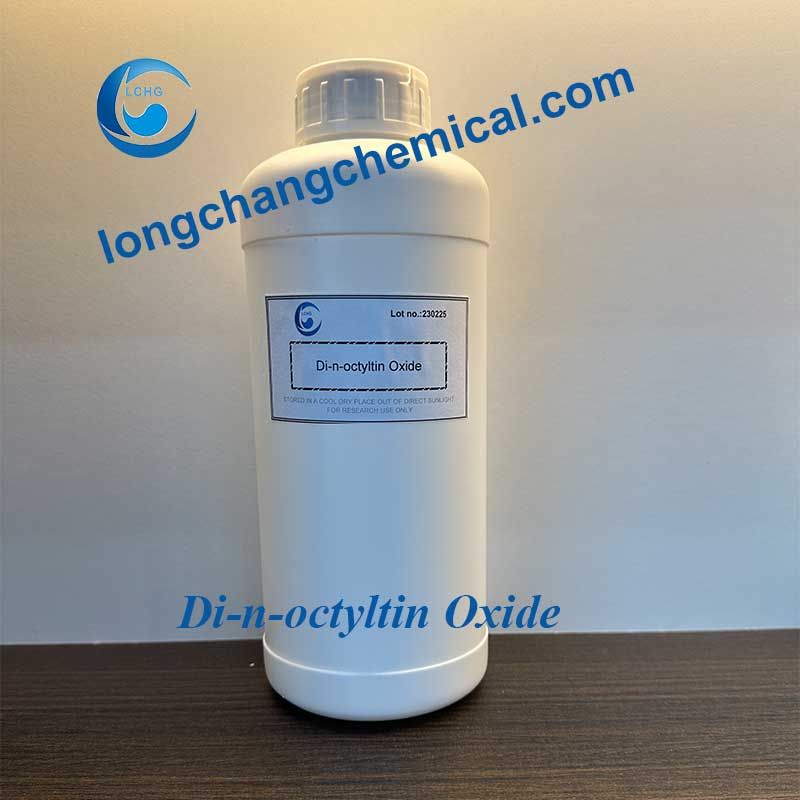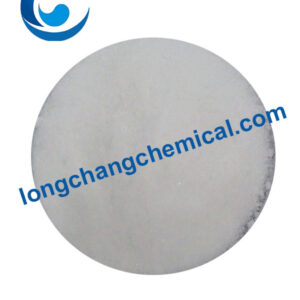描述
二辛基氧化锡/二辛基氧化锡 CAS 870-08-6
用于合成的二辛基氧化锡 - CAS 870-08-6 是一种用途广泛的化合物,广泛应用于各种领域。该化合物又称二辛基氧化锡,在合成过程中起着至关重要的作用,在研究领域具有重要意义。该产品具有高纯度和独特的成分,可确保获得可靠、准确的结果,因此非常适合合成工艺。用于合成的二辛基氧化锡可应用于众多技术领域,包括化学研究、制药业和材料科学。
该产品主要用于生产 PVC 热稳定剂、油漆增强剂,也可用于生产部分抗氧化剂催化剂。
作为合成聚氨酯的催化剂,它可以在水性涂料中形成稳定的分散体系。
特点
同义词:二辛基氧化锡、二辛基氧化锡烷
化学文摘社编号:870-08-6
高纯度:合成用二辛基氧化锡具有极高的纯度,可确保在合成过程中获得一致、精确的结果。
非常适合合成:这种化合物的独特成分和特性使其专为合成工艺而设计。它能让研究人员高效地获得理想的结果。
广泛的技术应用:用于合成的二辛基氧化锡可应用于各种技术领域,如化学研究、制药业和材料科学。它的多功能性使其适用于多种用途。
提供 MSDS:为确保用户安全,我们提供了用于合成的二辛基氧化锡的材料安全数据表 (MSDS)。其中包含基本的安全信息和指导原则。
有同行评审论文和技术文件支持:该化合物由同行评议论文和技术文件提供支持,为用户提供了更多信息、实验方案和参考资料,以加强他们的研究。
可提供类似产品:如果用于合成的二辛基氧化锡不能满足特定要求,还可提供具有不同成分和特性的类似产品,以满足个性化需求。
立即联系我们!
如果您需要价格,请在下表中填写您的联系信息,我们通常会在 24 小时内与您联系。您也可以给我发电子邮件 info@longchangchemical.com 请在工作时间(UTC+8 周一至周六,上午 8:30 至下午 6:00)或使用网站即时聊天工具获得及时回复。
| 无水氯化亚锡 | 7772-99-8 |
| 二甲基二氯化锡 | 753-73-1 |
| 单丁基氧化锡 | 2273-43-0 |
| 二丁基氧化锡 | 818-08-6 |
| 三丁基氧化锡 | 56-35-9 |
| 四丁基锡 | 1461-25-2 |
| 丁基硫醇锡 | 26410-42-4 |
| 二乙酸二丁基锡 | 1067-33-0 |
| 二月桂酸二丁基锡 | 77-58-7 |
| 马来酸二丁基锡 | 78-04-2 |
| 单丁基三氯化锡 | 1118-46-3 |
| 二丁基二氯化锡 | 683-18-1 |
| 三丁基氯化锡 | 1461-22-9 |
| 丁基锡三(2-乙基己酸酯) | 23850-94-4 |
| 二正辛基氧化锡 | 870-08-6 |
| 二甲基二烷基甜菜碱 | 68928-76-7 |
| 辛基硫醇锡 | 26401-97-8 |
聚氯乙烯热稳定剂中的二辛基氧化锡
各种热稳定剂的热变色评估
理想的热稳定剂应具有吸收 HCL、消除活性位点、增加共轭聚烯链、破坏碳正离子盐和防止自氧化的功能,而不产生对 PVC 降解有催化作用的产物。实际的热稳定剂具有不同的功能,表现出不同的热稳定特性,大致可分为四类:初始型、长期型、中间型和万能型。
1)镉、锌皂是典型的初始型热稳定剂,能快速吸收 HCL,并在 Cd、Zn 的催化下有效取代 PVC 链上不稳定的氯原子的羧酸根,从而有效抑制初始降解和着色,但由于其消耗快和转化产物 CdC12、ZnC12,又是 PVC 脱 HCL 的高效催化剂,因而会引发 PVC 的恶性降解,使材料骤然降解,因此长期热稳定性较差。
2)钡、钙皂是典型的长期热稳定剂,只有吸收 HCL 的功能,因此不能有效抑制 PVC 着色,但由于转化产物 BaC12、CaC12 不具有催化活性,不会导致 PVC 突然变黑,长期热稳定性较好。
3) 脂肪酸有机锡属于中间类型,不仅能吸收 HCL,还能有效地用羧酸根取代 PVC 链上不稳定的氯原子,且转化产物不具有催化活性。
4) 硫醇有机锡具有全面的特性,可通过多种机制同时稳定聚氯乙烯,且转化产物不具有催化活性,因此具有出色的初期和长期热稳定效果。
理想的 PVC 结构是相当稳定的首尾结构 -CH2-CHCl-CH2-CHCl-。然而,迄今为止,PVC 的合成方法还无法与顺丁二烯橡胶的合成方法相同,即顺丁二烯在齐聚物催化剂的作用下进行定向无规聚合。
氯乙烯的聚合是自由基无规聚合,它具有稳定的首-尾结构,有首-首结构-CH2-CHCl-CHCl-CH-,尾-尾结构-CHCl-CH2-CH2-CHCl-;有偶联歧化生成的乙烯基结CH2=CH2-CHCl-CHCl-CH2结构和烯丙基氯-CH2-CH=CH-CHCl-CH2等。
在PVC合成中生成的烯丙基氯、叔碳氯和双键是其分子链结构中的不稳定因素,顺序不稳定:PVC加工中易降解正是因为PVC分子链结构中的不稳定因素,如不加以稳定改性,其分解温度在130℃左右,而要将PVC树脂加工成有用的制品,其成型温度应在190℃以上。因此,有必要添加热稳定剂来稳定和改善其结构。


![(3r,4s)-1-benzoyl-4-phenyl-3-[(triethylsilyl)oxy]-2-azetidinone CAS 149249-91-2](https://longchangchemical.com/wp-content/uploads/2021/01/149249-91-2-appearance-300x300.jpg)


